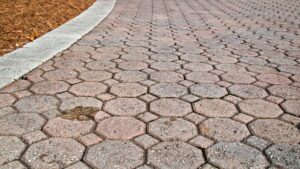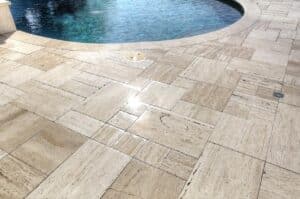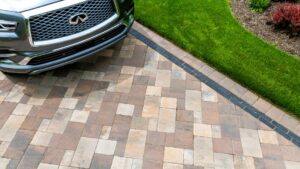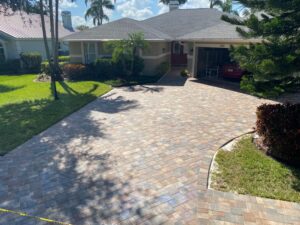Polymeric sand has emerged as a staple choice in the realm of hardscaping materials. Since its introduction into the market, its unique properties and versatility have been ideal for both paver bases and their filling joints – which is different for ordinary sand.
In today’s article, we will delve into the reasons why polymeric sand is a valuable addition to your outdoor projects and explore its benefits as a durable investment.
Read as well: How Long Do Pavers Last?
Why Use Polymeric Sand as a Paver Base
Polymeric sand serves as an excellent choice for paver bases due to its stability and durability, offering superior interlocking capabilities and ensuring a strong foundation for your pavers.
By filling the voids between pavers and creating a solid base, for example, polymeric sand effectively prevents shifting, settling, and weed growth, thereby increasing the longevity of any hardscaping installation. Furthermore, given its mixed composition, ant infestations are also less likely to happen, sparing you eventual maintenance that most homeowners must deal with.
Learn how to install polymeric sand as a paver base here.
Why Use Polymeric Sand in Between Paver Joints
On the other hand, the application of polymeric sand in between paver joints provides numerous advantages, too. Firstly, it acts as a powerful barrier against weed growth – considering how the sand’s granular composition inhibits weed germination, reducing the need for frequent maintenance and weed removal.
Additionally, polymeric sand enhances the stability and integrity of the paver structure by tightly locking the individual pavers together. This minimizes movement caused by heavy traffic, freeze-thaw cycles, or natural ground shifts, resulting in a longer-lasting and visually appealing hardscape.
Learn how to install polymeric sand in paver joints here.
What Are the Benefits of Polymeric Sand in Comparison to Regular Sand?

While regular sand works in a short-term capacity, it doesn’t create the powerful bond that locks the pavers in place. Regular sand can be easily washed away by rain and wind and it doesn’t keep weeds and mildew to grout between your pavers.
Therefore, polymeric sand is the sand of choice when working with pavers. As mentioned, it offers significant advantages as both a paver base and joint filler, sharing the following properties:
- Weed Resistance: Polymeric sand effectively prevents weeds from sprouting between paver joints, eliminating the need for herbicides and reducing maintenance efforts.
- Enhanced Stability: The interlocking nature of this product improves the overall stability and structural integrity of your floor, minimizing paver movement, preventing gaps, and maintaining an even surface.
- Durability: This type of sand is designed to withstand various weather conditions, including heavy rain, extreme temperatures, and freeze-thaw cycles. It remains intact and resilient, ensuring the longevity of your hardscape installation.
- Easy Installation: Applying polymeric sand is mostly a straightforward process. It involves sweeping the sand into the joints, dampening the surface, and allowing it to cure. The simplicity of installation saves time and effort compared to traditional methods like mortar, which can be used in combination with sand.
Choosing the Color of Polymeric Sand
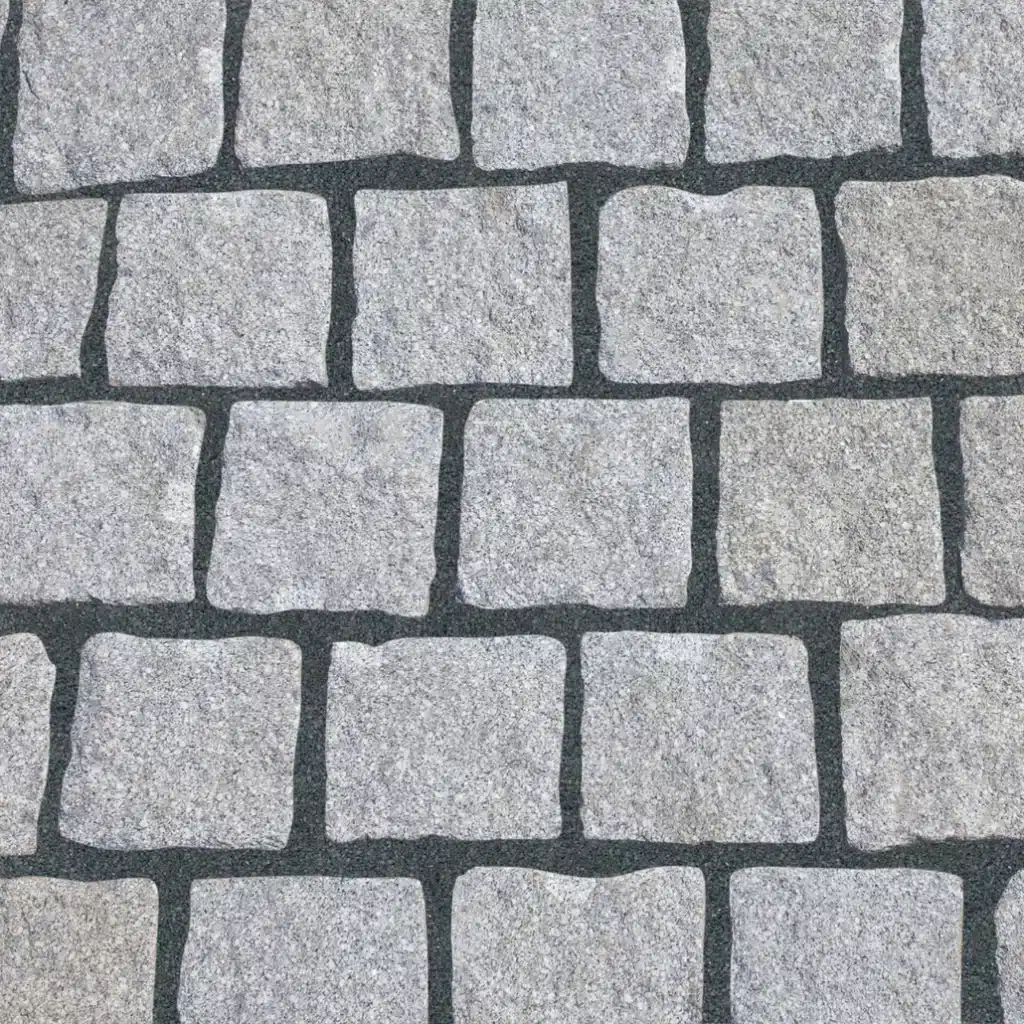
By filling in the gaps between pavers with polymeric sand, you achieve a neat and uniform appearance – and the sand’s color options allow you to complement or contrast with the whole curb, enhancing the visual appeal of your outdoors.
Of course, when selecting the sand color, it is vital to consider your home aesthetic, as well as the overall design theme of your project. That said, you can achieve a cohesive and pleasing result with the following:
- Natural/Neutral Colors: These shades resemble natural sand or earth tones, such as beige, tan, or gray. Natural colors blend well with most paver types and provide a subtle and classic look to any project;
- Brown/Red Tones: Some polymeric sands are available in brown or reddish hues. These colors are often chosen to complement pavers with warm or earthy tones, creating a harmonious and cohesive appearance;
- Gray/Charcoal: Gray and charcoal shades are popular options for modern or contemporary hardscape designs. These colors can add a sleek and sophisticated touch to the overall aesthetic;
- Custom Colors: Certain manufacturers offer custom color options, allowing you to match the sand color precisely to your specific paver or design requirements. This option provides flexibility in achieving the desired look and style.
Speak to hardscaping professionals near you!
As much as handling base materials is easy, DIY techniques are not always the best option – and all the complex logistics speak for themselves, even for something as simple as pouring sand.
Over 12 years in the hardscape business, our team has dealt with many homeowners in many different situations – and we know how tricky the whole installation process can be, from the base to the top. That’s why we always recommend hiring a professional in your area whom you can trust – so that they assist you with planning from the very beginning.
That said, if you happen to be around our area of activity, the Sarasota and Manatee counties, in Florida, why not give us a call to help you out? We can take your dream patio off the paper!
You can contact us any time for a free estimate of our services! Call us right now at 941-773-3098 or email us at sales@sspavers.com. We would be more than happy to help you with any hardscape needs you might have – including supply, installation, and maintenance services.

